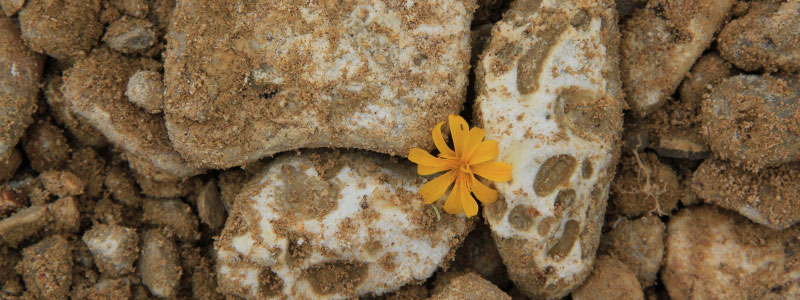Geological time
The alluvial deposits of quaternary age (-450,000 years), are based on geological formations of Miocene and Pliocene age (end of the Tertiary) present in Vacqueyras in the form of fine sands locally called "safres" (Miocene) and very compact blue marls (pliocene).
Geographic location
The surface area of the Garrigues terrace is over 800 hectares. It is located in the municipalities of Vacqueyras and Sarrians.
The vine occupies almost the entire available space. The groves and oak woods shape the landscape.
Today it is perched 30 meters above the Ouvèze bed, an observation that materializes the extent of erosion since the original deposition phase.
The Hautes Garrigues plateau is located in the northern part of the Garrigues terrace. The Garrigues South plateau is located in the southern part of the Garrigues terrace.
Les Garrigues de l'Étang is located in the central part of the Garrigues terrace.
Weather
In general, the Garrigues terrace represents a space with optimum sunshine (no shadows) and ventilation provided by the mistral that no obstacle can stop.
Soils
Characteristic / definition of the soil and subsoil
The sections of the Garrigues terrace all have the same succession, but the thickness of the stones is variable:
There are a wide variety of substrates capable of playing the role of "micro-terroirs" inside this terrace.
Sols
It is a deposit of coarse gravel of old quaternary age (- 450,000 years), made up of pebbles, gravels, fine sands and clays, set up by the Ouvèze during marked climatic episodes by a strong water supply from the catchment area of this river.
The pebbles and gravels are mainly made up of secondary age limestones (Jurassic and Cretaceous), borrowed by erosion from the mountain ranges of the Baronnies.
The soil has a brown or brick (ferruginous) color, associated with clays which pack gravel and pebbles.
In the Hautes Garrigues the thickness of the alluvium is relatively large (several meters).
This means that the root system of the vine finds its nourishment in the thickness of the pebbles.
In the Garrigues Sud, the thickness of the alluvium may be locally very small. The root system of the vine explores not the pebbles but the tertiary sands and marls.
In the Garrigues de l'Etang, the thickness is variable but still quite small.
Grape varieties
The sites where the terrace has a small thickness are favorable to the existence of terroirs very favorable to white grape varieties.
The vine, in this configuration, installs its root system in the sandy or marly substratum in order to find there a significant water reserve as well as the mineral elements essential for its growth and the creation of the tannic palette.
In general, the Garrigues terrace has terroirs that welcome all the red grape varieties.
Grenache is king in soils of fairly thick stony alluvium. It gives fleshy and deep wines, with fairly dense tannins and aromas of very ripe red fruits, reflecting very well the sunny side of the place.
On soils where the pebbles are not very thick it gives very elegant and fine wines, with silky tannins and aromas of red fruits.
Syrah benefits better from implantation in sectors where the alluvium is thinner, the same applies, with even more sensitivity, to Mourvèdre, whose good results are conditioned by the proximity of a marly substratum shallow depth.
The white grape varieties, unexpected on such a stony terrace, owe their success to the conditions of soils designated by a thin thickness of pebbles. The Roussanne develops a superb aromatic range, the Clairette a beautiful minerality, the Grenache blanc a fat which goes well with a certain tension of the Clairette.

